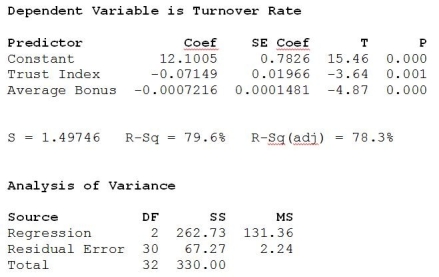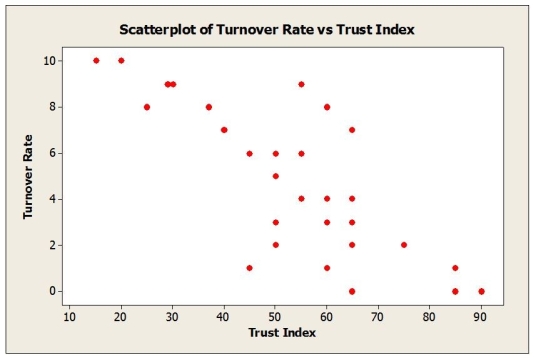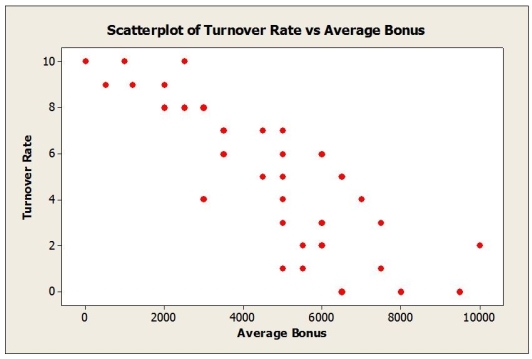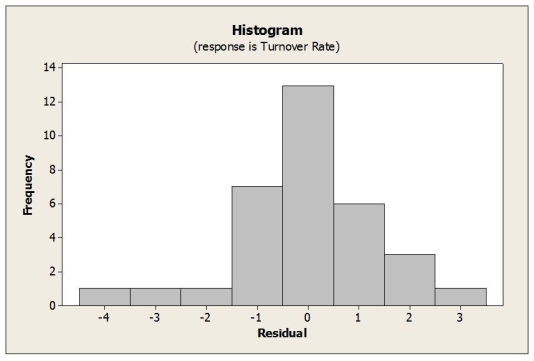In determining the best companies to work for, a number of variables are considered, including size, average annual pay, and turnover rate, etc. Moreover, employee surveys are conducted in order to assess aspects of the organization's culture, such as trust and openness to change. In an attempt to determine what affects turnover rate, a sample of 33 companies was randomly selected and data collected on the average annual bonus and turnover rate (%) for 2008. In addition, a questionnaire was administered to the employees of each company to arrive at a trust index (measured on a scale of 0-100). Below are the multiple regression results.  a. Write out the estimated regression equation.
a. Write out the estimated regression equation.
b. Is the regression equation significant overall? Explain.
c. How much of the variability in Turnover Rate is explained by the regression equation?
d. State the hypotheses for testing the regression coefficient of Trust Index. Based on the results, what do you conclude?
e. State the hypotheses for testing the regression coefficient of Average Annual Bonus. Based on the results, what do you conclude?
f. Predict the turnover rate for a company with a trust index score of 70 and an average annual bonus of $6500.
g. Comment on whether the conditions for multiple regression are satisfied based on the plots shown below. 



Definitions:
Hidden Feature
A functionality within software or devices that is not immediately apparent or accessible under normal use, often requiring specific actions to be revealed.
Merge Scenarios
Situations or case studies in software development or data management where combining datasets or functionalities is explored for efficiency or enhancement.
Scenario
A description of a possible event or series of events, often used for planning or testing purposes.
Changing Values
The process of updating or modifying data values in a database, software application, or document.
Q3: Which of the following re-expressions of the
Q8: A type I error is committed when<br>A)
Q8: From the histogram of residuals below we
Q8: James had a contract with Frasier to
Q23: Recently a shipping company took 30 samples
Q25: All else being equal, increasing the level
Q25: In this context, describe the Type I
Q36: The standard error of the slope for
Q56: The term _ refers to a mode
Q61: Absorption rates into the body are important